How to Improve Reading Skills in Students
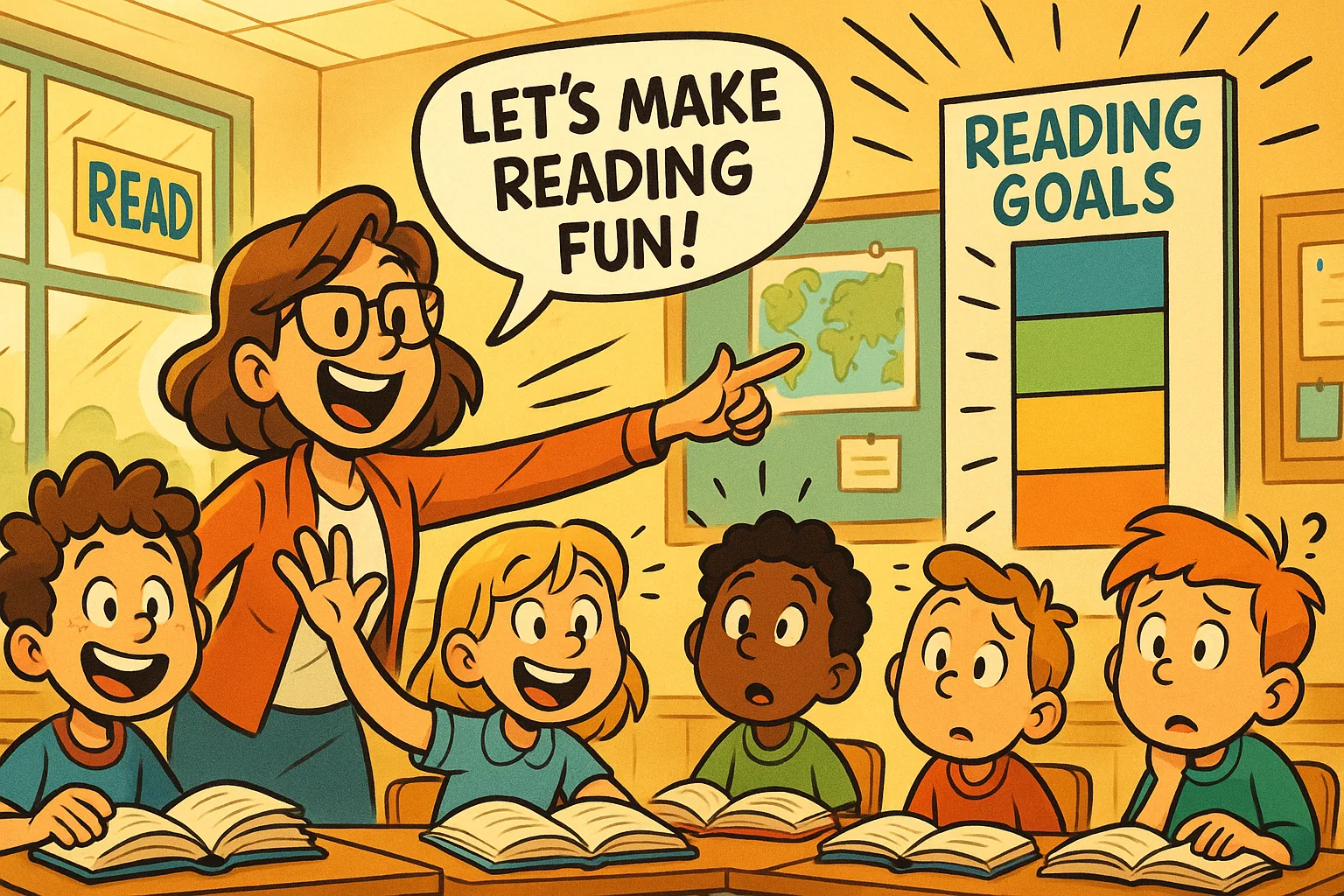
In today’s information-rich world, strong reading comprehension skills are essential for lifelong learning, critical thinking, and active participation in society. The ability to read deeply—to grasp an author’s intent, make inferences, and connect ideas shapes a student’s success across every subject. Yet for many, reading comprehension remains a challenge that requires a structured, intentional approach beginning early and reinforced throughout schooling.
The good news is that teaching reading is a proven, evidence-based practice. The science of reading offers educators and parents a clear roadmap for helping every child become a confident, capable reader. This guide, informed by recent research in child development and cognitive science, provides practical strategies to improve reading proficiency and support struggling learners an urgent need, as 34% of U.S. fourth graders were below basic literacy levels in 2022.
Key Components of Reading Development
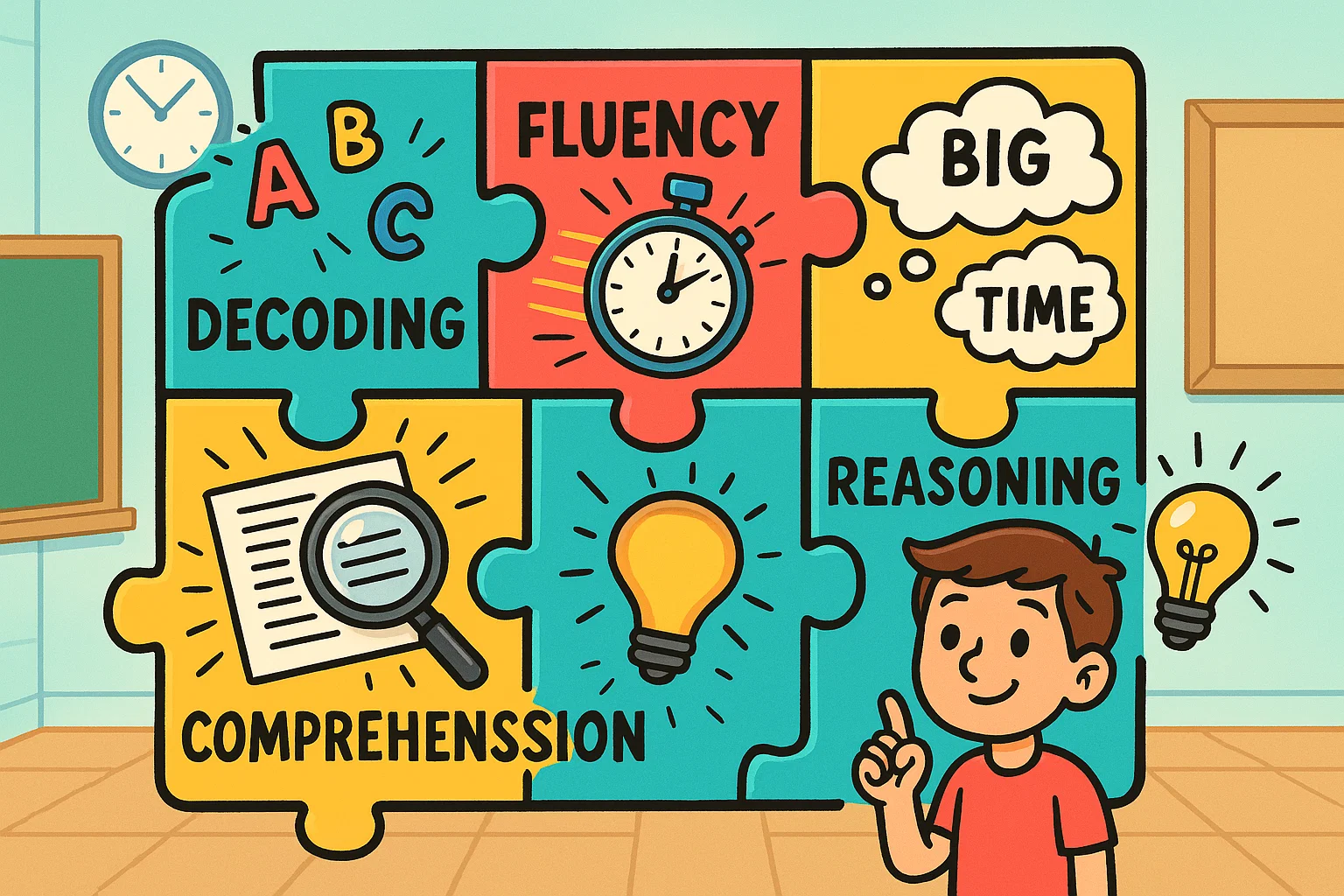
Becoming a proficient reader is not a single skill; it’s a complex tapestry woven from multiple, interconnected abilities. A student needs to master all these core foundations to transition from learning to read to using texts to learn. When a student struggles with reading and literacy, it’s often a breakdown in one or more of these foundational abilities.
Decoding and Phonemic Awareness
The journey to strong reading begins with decoding skills—the ability to apply knowledge of letter-sound relationships to correctly pronounce written words. Phonemic awareness, a precursor to decoding, is the ability to hear, identify, and manipulate the smallest individual sounds (phonemes) in spoken words.
- What is it? It’s the essential link between the sounds we speak (language comprehension) and the letters we write. Without the ability to reliably decode words, a student can’t access textual meaning.
- Best Practices for Instruction: Effective instruction should be explicit and systematic, following a structured phonics program. Teachers should help students blend sounds and segment words. Multisensory Learning: Encourage students to use sight, sound, and touch. For example, have students tap out the sounds in a word, trace the letters in sand, or use manipulatives like letter tiles to build words. Hands-on Activities: Use rhyming games, sound-matching exercises, and syllable clapping to make the abstract concept of phonemes concrete.
Fluency and Reading Speed
Reading fluency is the bridge between decoding and comprehension. A fluent reader reads with speed, accuracy, and proper expression (prosody). When their access to text is slow and effortful, the student’s working memory is overloaded just trying to figure out the words, leaving no cognitive capacity for understanding the text.
The Link to Comprehension: When a student achieves automaticity in word recognition, they free up mental energy to focus on the text’s meaning.
Strategies to Improve Reading Fluency:
- Guided Oral Practice: The teacher or a more proficient peer reads a text aloud, modeling good phrasing and expression, and the student follows along.
- Repeated Practice: Having students read a short passage multiple times until they reach a target speed and accuracy level. This builds automaticity.
- Paired Reading: Students read together, providing immediate support and feedback to each other.
- Digital Tools: Use apps and software that provide immediate feedback on text processing rate and pronunciation.
Vocabulary Growth
Vocabulary knowledge is inextricably linked to reading comprehension. If a student encounters too many unknown words in a text, they will inevitably struggle to follow the narrative or argument. Students with rich vocabularies have an easier time making inferences and grasping complex ideas.
The Exposure Factor: Students need to be exposed to words in multiple contexts and repeatedly for the word to move from their passive to active vocabulary. This goes beyond simple definition memorization.
Effective Vocabulary Techniques:
- Contextual Learning: Teach students to use surrounding words and sentences as clues to infer the meaning of an unknown word.
- Word Walls and Banks: Create engaging, interactive displays of key reading vocabulary that are frequently used and discussed.
- Morphological Awareness: Teach how prefixes, suffixes, and roots change word meanings (e.g., un + happy = unhappy).
Sentence Cohesion and Structure
Reading for comprehension requires more than just understanding individual words; it demands an ability to see how words are organized into sentences and how those sentences connect to form a cohesive text. This involves an awareness of syntax and grammar.
- Syntax and Meaning: A student needs to understand how sentence structure (e.g., subject-verb-object) affects meaning. Comprehension strategies often involve parsing complex sentences into simpler ideas.
- Cohesive Devices: Explicitly teach transition words (e.g., however, consequently, in addition) and pronoun references (e.g., she, it, they) that link ideas across sentences and paragraphs.
- Active Practice: Have students create their own complex sentences using specific conjunctions or transition words, or have them simplify complex sentences from a reading session to practice structural understanding.
Reasoning and Background Knowledge
Ultimately, reading comprehension is the ability to connect the text to existing knowledge and to use higher-order thinking skills to evaluate and synthesize information. This is where the student moves beyond classroom learning and applies critical judgment.
Prior Knowledge is Power: A student’s prior knowledge acts as a mental schema, providing a framework for organizing and understanding new information. If a student is studying about the Roman Empire but has no background knowledge of the concept of “empire,” their comprehension will suffer.
Cultivating Critical Thinking:
- Inference: Help students develop the ability to “read between the lines” and draw conclusions based on textual evidence and their own knowledge.
- Synthesis: Teach students how to combine information from different parts of a text or even from multiple sources.
- Evaluation: Encourage students to question the author’s purpose, bias, and credibility.
Real-World Connections: Always seek ways to link lessons to the student’s lived experiences, current events, or familiar contexts. This is a powerful strategy to improve their reading engagement.
Classroom Strategies to Improve Reading Skills
The classroom is the primary environment for direct reading instruction. Effective teachers weave these skills and strategies into the daily routine, creating a culture where regular reading and deep thinking are the norms.
Daily Reading Rituals
Consistency is the bedrock of building literacy skills. Dedicated, uninterrupted daily reading time helps students build stamina and normalize the practice.
- Structured Silent Sustained Reading (SSSR): Allocate 10–20 minutes each day for independent, self-selected engagement with text. The key is true “silent and sustained”—no interruptions, no busy work, just engagement with the material.
- Book Sharing and Recommendations: Promote peer-to-peer discussions where students briefly share what they are reading and why they recommend it. This fosters a love for reading and exposes students to new genres.
- Dedicated Time with Text: Make it clear that this time is sacred. Providing this opportunity for independent reading allows students to practice the comprehension strategies they’ve learned.
Interactive Read-Aloud Sessions
Teacher-led read-aloud sessions are not just for young children; they’re a critical instructional practice across all grade levels. It models expert processing of text and provides an opportunity to explicitly teach how comprehension strategies can be taught.
- Model Fluency and Expression: The teacher can show students what a great textual interpreter sounds like—varying pace, tone, and volume to match the text. This helps improve reading fluency.
- “Think-Alouds”: While interpreting a passage, stop frequently to vocalize your own thinking skills. “Hmm, I’m going to make a prediction here… The author said X, so I wonder if Y will happen.” This makes the invisible reading process visible.
- Engage Students with Targeted Questions: Pause to ask questions that encourage deep thought: Predictive: “Based on this title, what do you think the main character’s problem will be?”. Inferential: “The character just sighed and looked away. What does that tell us about how they feel, even though the text didn’t say it?”. Reflective: “Does this part remind you of anything you’ve learned or experienced before?”
Phonics and Word Study
For students still building their foundational skills, direct, explicit instruction in phonics and word patterns is non-negotiable.
| Activity Type | Focus Area | Description |
| Sound Matching | Phonemic Awareness | Students identify words that start or end with the same sound (e.g., /b/ in ball, bus, bed). |
| Word Ladders | Decoding/Spelling | Students change one letter to form a new word: cat -> mat -> map -> tap. |
| Morpheme Mania | Vocabulary/Decoding | Breaking down words into roots and affixes (e.g., mis–-understand–-ing). |
| Decoding Challenges | Fluency/Accuracy | Rapidly processing lists of similar-looking words (e.g., pat, pet, pot, pit) to build automaticity. |
These focused practices, done in short, energetic bursts, help students develop the decoding skills necessary to recognize words quickly and accurately.
Vocabulary Enrichment Techniques
New words should be introduced and revisited within meaningful, thematic contexts, not in isolation.
- Contextual Vocabulary Instruction: Instead of rote memorization, teach students new words by having them encounter the word in several different, rich sentences or passages. Discuss the subtle shades of meaning.
- Thematic Units: Group new vocabulary around a central topic (e.g., a unit on space exploration introduces words like celestial, trajectory, orbit, g-force).
- Word Games: Use low-stakes, fun activities to practice retention. Pictionary, Charades, or “Guess the Word” using only synonyms are powerful tools. The goal is to get students engaged and use the new words.
Reflective Reading and Response
Improve reading comprehension by ensuring students move beyond passive assimilation into active, critical thought about the text.
- Text Response Journals: Encourage students to express their thoughts and feelings about the passage. Prompts can focus on predicting, questioning, connecting, and summarizing.
- Think-Pair-Share: After a segment of text access, ask a higher-order thinking skills question. Students first think individually, then discuss with a partner, and finally share their combined ideas with the larger group.
- Graphic Organizers: Use visual aids like Venn diagrams (to compare/contrast), sequence charts (to follow plot/instructions), or main idea/detail webs to help students follow the structure of the text. This is a strategy that helps struggling with reading to visualize their thinking.
Home Support and Parental Involvement
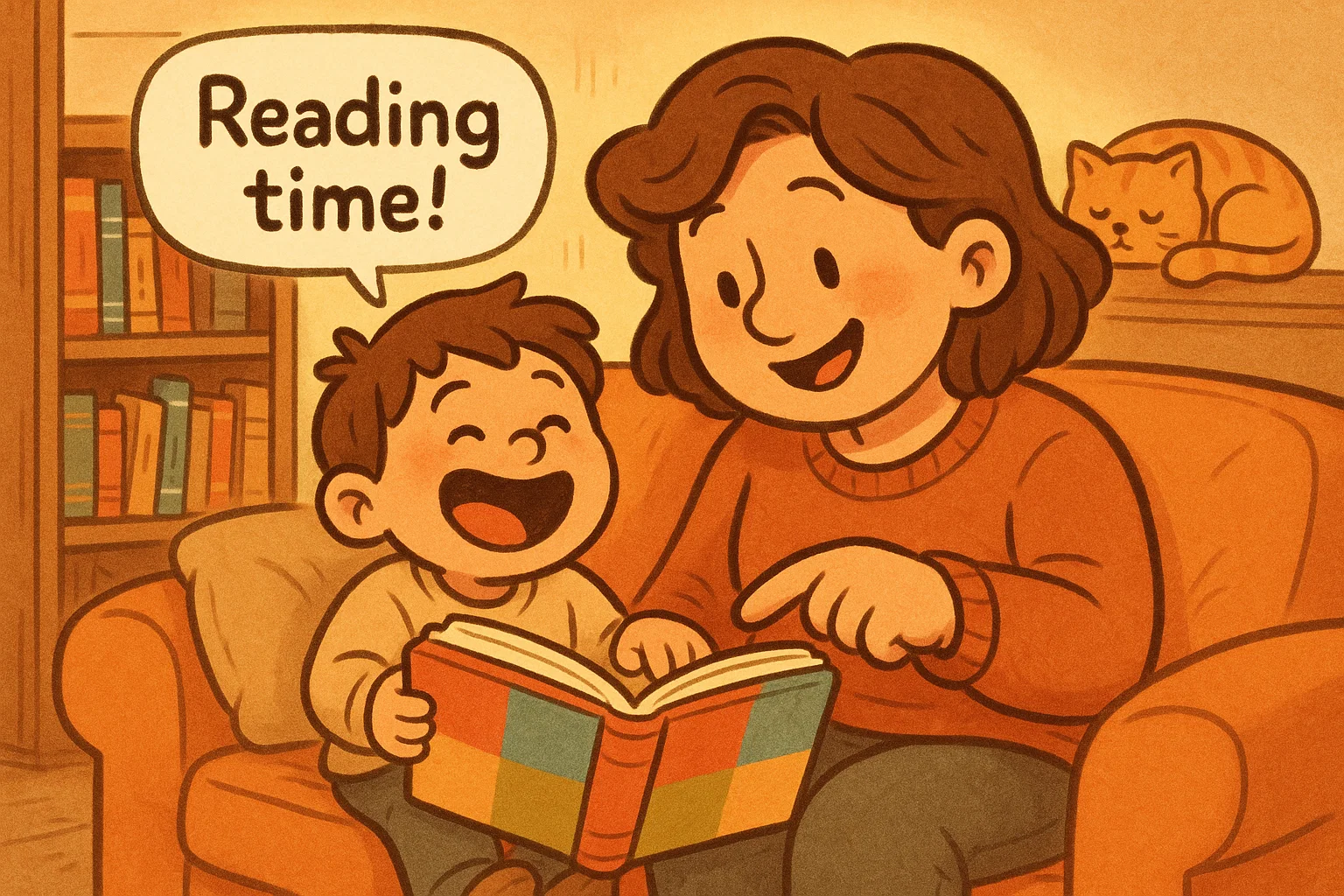
The single greatest predictor of a child’s textual proficiency is a supportive, literacy-rich home environment. Parental involvement acts as a powerful complement to formal reading education.
Building a Reading-Friendly Environment
Small changes at home can significantly enhance reading habits and motivation.
- Create a Literacy Nook: Designate a quiet, comfortable, well-lit space free from distractions (like screens) just for engaging with texts. Make it inviting.
- The Home Collection: You don’t need a huge budget. Use library books, yard sales, or book swaps to regularly expose your child to a variety of reading materials. Organize books simply—by genre, author, or even color—to make selection easy.
- Visible Engagement: Let your child see you involved with texts. Whether it’s a novel, a newspaper, or a manual, modeling strong study habits is one of the most powerful things a parent can do.
Reading Aloud Together
Shared reading—where a parent reads to or with a child—is an essential practice that extends well beyond the preschool years.
- Model Expert Interpretation: Studying aloud to your child, even once they can study independently, models fluent, expressive delivery and helps them understand how punctuation and tone convey meaning. This is a fantastic way to improve reading fluency and comprehension naturally.
- Shared Responsibility: For older children, try processing a chapter together, alternating paragraphs or pages. This makes it a shared activity and allows the parent to immediately correct word difficulties and discuss meaning.
- Discussing the Passage: Don’t just go through the story; talk about it. Ask: “Why do you think the character made that choice?” or “What do you predict will happen next?” This encourages thinking skills and actively engages the child with the text.
Selecting Age-Appropriate Books
Choosing materials that are neither too easy nor too frustrating is key to maintaining a child’s confidence and interest. The ideal book should be challenging enough to introduce new vocabulary but accessible enough to maintain understanding.
The “Five Finger Rule”: A simple guideline for finding the right reading level.
- Have your child process a page of the book.
- If they struggle to decode or recognize more than five words on that page, the book is likely too difficult for them to process independently.
- If they miss two or three words, it’s a good ‘just-right’ book—challenging but manageable.
Content Relevance: Encourage your child to select texts about their hobbies, interests, or subjects they are curious about. Relevance increases motivation.
Encouraging Active Reading 🤔
Active reading is the opposite of passively scanning words. It’s about engaging with the text mentally and physically. These specific strategies are powerful tools:
- Making Predictions: Before and during text access, ask, “What do you think is going to happen?” This sets a purpose for the activity.
- Visualizing: Help kids create a mental movie of the story. “What color is the hero’s cape? Can you picture the forest they are walking through?”
- Summarizing: After processing a paragraph or chapter, have your child briefly state the main idea and key details in their own words. This is a key measure of whether they’re reading for meaning.
- Questioning: Teach kids to question the text itself: “Why did the author include this detail?” or “What do I still not understand?”
Promoting a Growth Mindset ✨
A child’s belief in their own ability to learn is a powerful engine for improvement. Reading difficulties often lead to frustration; parents need to be the chief sources of encouragement.
- Praise Effort, Not Ability: Instead of saying, “You are so smart,” say, “I love how you kept trying to sound out that tricky word. That persistence is how you get better!” This reinforces the idea that hard work is key to progress.
- Frame Struggles as Learning Opportunities: When your child struggles, focus on the strategy they used. “You figured out that word by looking at the picture! That’s a great reading comprehension strategy.” This helps them see setbacks as temporary and solvable.
- Avoid Labels: Never refer to a child as a “bad scholar” or a “slow learner.” Focus on the action: “You are currently working on your text processing speed.”
Technology and Tools for Reading Improvement
Technology offers personalized, engaging, and adaptive support to improve reading comprehension and fluency and fluency, especially for struggling readers.
Educational Apps and Platforms
These tools can gamify the learning process and provide targeted practice.
| Tool Category | Example Platforms | How They Help |
| Phonics/Decoding | ABCmouse, Reading Eggs | Deliver systematic phonics instruction through interactive games and animations. |
| Fluency/Access | Raz-Kids, Epic! | Offer a huge library of leveled e-books and include read-aloud and tracking features. |
| Comprehension | Newsela, Kahoot! | Provide current events articles at multiple comprehension levels and quizzes. |
| Vocabulary | Quizlet, Word Hippo | Interactive flashcards, definitions, and games to cement new word knowledge. |
These platforms make students practice without the pressure of a live classroom setting, allowing for frequent, low-stakes errors and immediate feedback.
Online Reading Games and Activities
Short, interactive activities can reinforce specific foundational reading skills in a fun, pressure-free way.
- Word Building Games: Drag-and-drop activities that help reinforce vowel sounds and consonant blends.
- Contextual Fill-in-the-Blanks: Quizzes that require students to follow the context of a sentence to choose the correct vocabulary word.
- Interactive Quizzes: Short multiple-choice quizzes after processing a short story, focusing on identifying the main idea or the sequence of events.
Audiobooks and Read-Along Features
For students who have strong language comprehension but struggle with the act of decoding, audio support can be a lifeline.
- Bypassing Decoding Issues: Audiobooks allow students to access complex, grade-level content without being held back by slow decode words. This enables them to continue building vocabulary and background knowledge.
- Modeling Fluency: The professional narration in audiobooks models expert pace, rhythm, and expression, helping to improve reading fluency subconsciously.
- Read-Alongs: Many e-books offer a feature where the text is highlighted while the narration plays. This is excellent for linking the written word to the spoken word.
Adaptive Learning Systems
These sophisticated tools use artificial intelligence to personalize the learning path for each student.
- Personalized Content: Systems like Lexia Core5 or i-Ready assess a student’s current proficiency and then dynamically adjust the difficulty and type of reading materials they receive.
- Targeted Intervention: If the system detects that a student consistently struggles with long vowel sounds, it will automatically provide more focused practice in that area. This ensures that instruction is always at the student’s primary and secondary zone of proximal development.
- Data Reporting: They provide detailed reports to teachers and parents on a student’s exact strengths and weaknesses, making it easier to select the specific strategies for intervention.
Addressing Common Reading Challenges
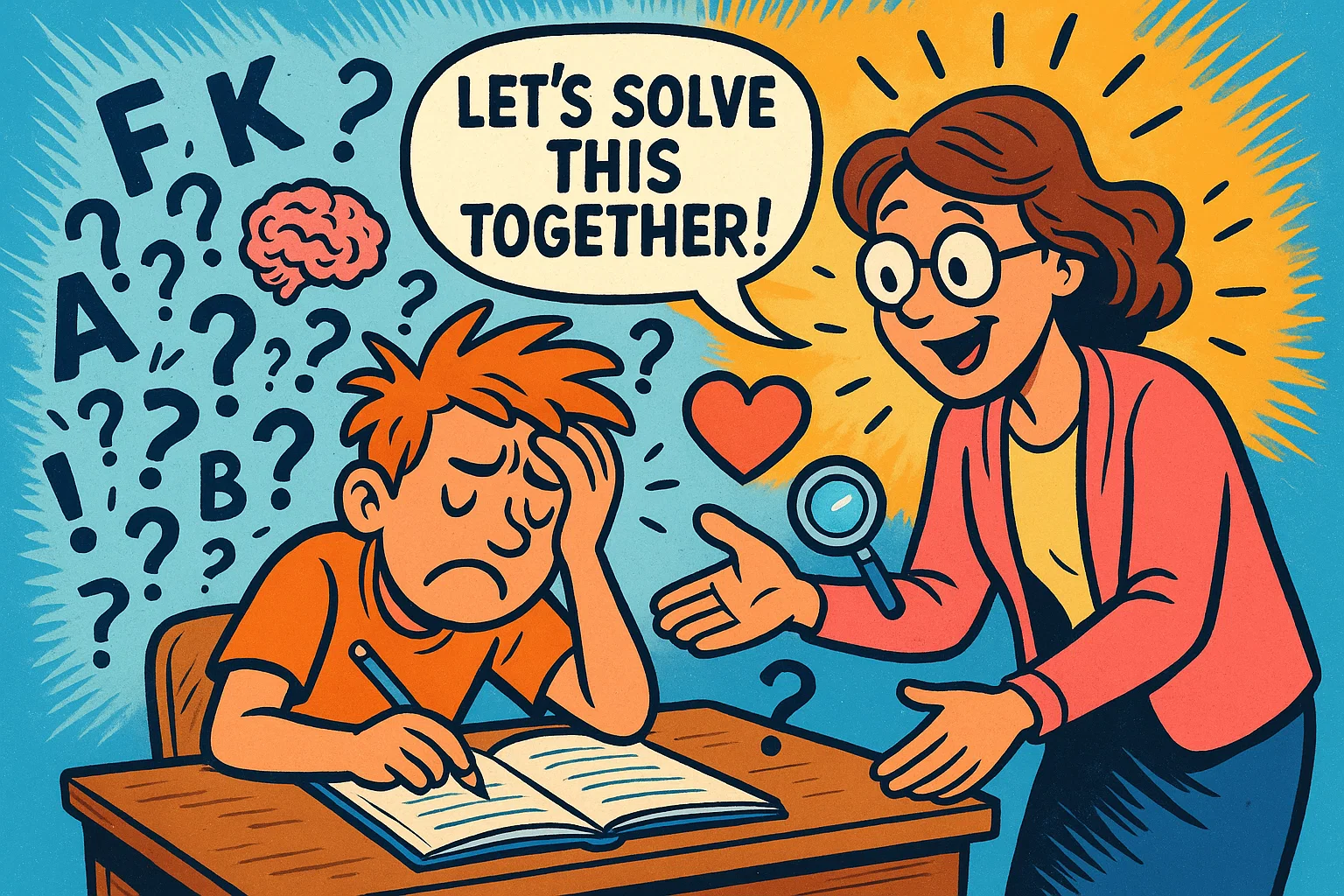
Some students face specific barriers that require targeted intervention. Recognizing these challenges and applying the right reading program is crucial.
Dyslexia and Decoding Issues
Dyslexia is a neurobiological condition that primarily affects the ability to accurately and fluently recognize words and decode.
- Early Detection: The earlier a child is identified, the sooner they can receive specialized help. Look for persistent struggles with phonological awareness (rhyming, segmenting) and learning the alphabet/letter sounds.
- Orton-Gillingham Approach: This highly structured, multisensory, and explicit approach to phonics is the gold standard for teaching a child to read who has dyslexia. It uses kinesthetic, auditory, and visual methods simultaneously.
- Visual Aids and Spacing: Using larger font sizes, higher contrast, and increased spacing between words can sometimes help students whose visual processing is affected.
Attention and Memory Barriers
Some students’ reading difficulties stem from poor focus or limited working memory, which makes holding information long enough to process it challenging.
- Structured, Short Tasks: Break up engagement with text into smaller, manageable chunks (e.g., 10 minutes of study followed by a 2-minute active summary).
- Pre-Text Activities: Use pre-teaching of vocabulary and brief discussions of background knowledge to reduce cognitive load during the actual reading activity.
- Mindfulness and Movement: Short mindfulness exercises before a reading session can improve focus. Integrating movement or hands-on activities can also help anchor the learning.
Low Motivation or Reading Anxiety
A cycle of failure often leads to low self-esteem, making a child avoid texts entirely. Good reading requires a positive attitude.
- Choice-Based Engagement: Give students control over what they study. Allowing them to choose a genre, topic, or specific book immediately increases motivation and engagement.
- Relatable Content: Use texts with characters who look like them, share their experiences, or tackle issues relevant to their lives.
- Low-Stakes Practice: Create opportunities for reading together in a supportive, non-evaluative setting (e.g., studying with a younger sibling, a class pet, or a volunteer listener). This helps build confidence before independent reading.
Language and Comprehension Gaps
English Language Learners (ELLs) or students with general language comprehension difficulties often struggle with text access in English.
- Pre-Teaching Vocabulary: Systematically pre-teach the crucial vocabulary and domain-specific words before introducing a new text.
- Visual Scaffolds: Use pictures, charts, maps, and videos to provide concrete context for the text. Visuals bridge the gap between abstract words and real-world concepts.
- Connecting Languages: Allow students to use their first language to discuss or process the content, as literacy skills often transfer between languages.
Reading Skill Assessment and Progress Tracking
Consistent and meaningful assessment is essential for understanding where a student is succeeding and where they need further support. It provides data for continuous improvement in teaching of reading.
Formative and Summative Assessments
Assessment should be a continuous feedback loop, not just a final grade.
Formative Assessments (Ongoing): Quick checks during the lesson.
- Exit Slips: Ask students to write the main idea of the day’s text on a note card before leaving.
- Quick Retellings: Have a student summarize the passage in 30 seconds.
- “Thumbs Up/Down”: A way to help gauge general understanding of a specific concept or instruction related to the studied material.
Summative Assessments (Formal): Periodic, structured tests that measure overall reading comprehension and fluency. These inform instructional planning and help students gauge their own growth.
Using Reading Logs and Journals
These tools empower students to become active participants in monitoring their own progress.
- Self-Tracking: A simple log where a student records the title, author, and number of pages processed encourages them to notice their own daily reading consistency.
- Reflection Prompts: The journal can include prompts for reflection, like, “What was the most confusing part of this text access and why?” or “What comprehension strategy did you use today?” This helps them internalize the textual process.
Digital Progress Reports
Many educational technologies and Learning Management Systems (LMS) can now automatically track and report student data, providing visual, accessible insights.
- Fluency Rate: Apps can measure and chart words-per-minute (WPM) growth during text processing.
- Comprehension Scores: Platforms track success rates on comprehension quizzes over time, breaking down scores by primary and secondary abilities (e.g., recall vs. inference).
- Visual Data: Seeing a bar graph of their own improvement can be highly motivating, demonstrating to students that effort translates to results.
Peer and Teacher Feedback
Constructive feedback is a powerful driver of change.
- Oral Feedback (Teacher): During a small-group session with text, the teacher can provide immediate, specific feedback: “Great job sounding out that word! Next time, try to pause slightly at the comma to make the sentence clearer.”
- Collaborative Review: Pair students to review each other’s summaries or responses to a passage. Allowing students to understand and critique each other’s thinking sharpens their own understanding of what strong reading comprehension skills look like.
Encouraging Lifelong Reading Habits
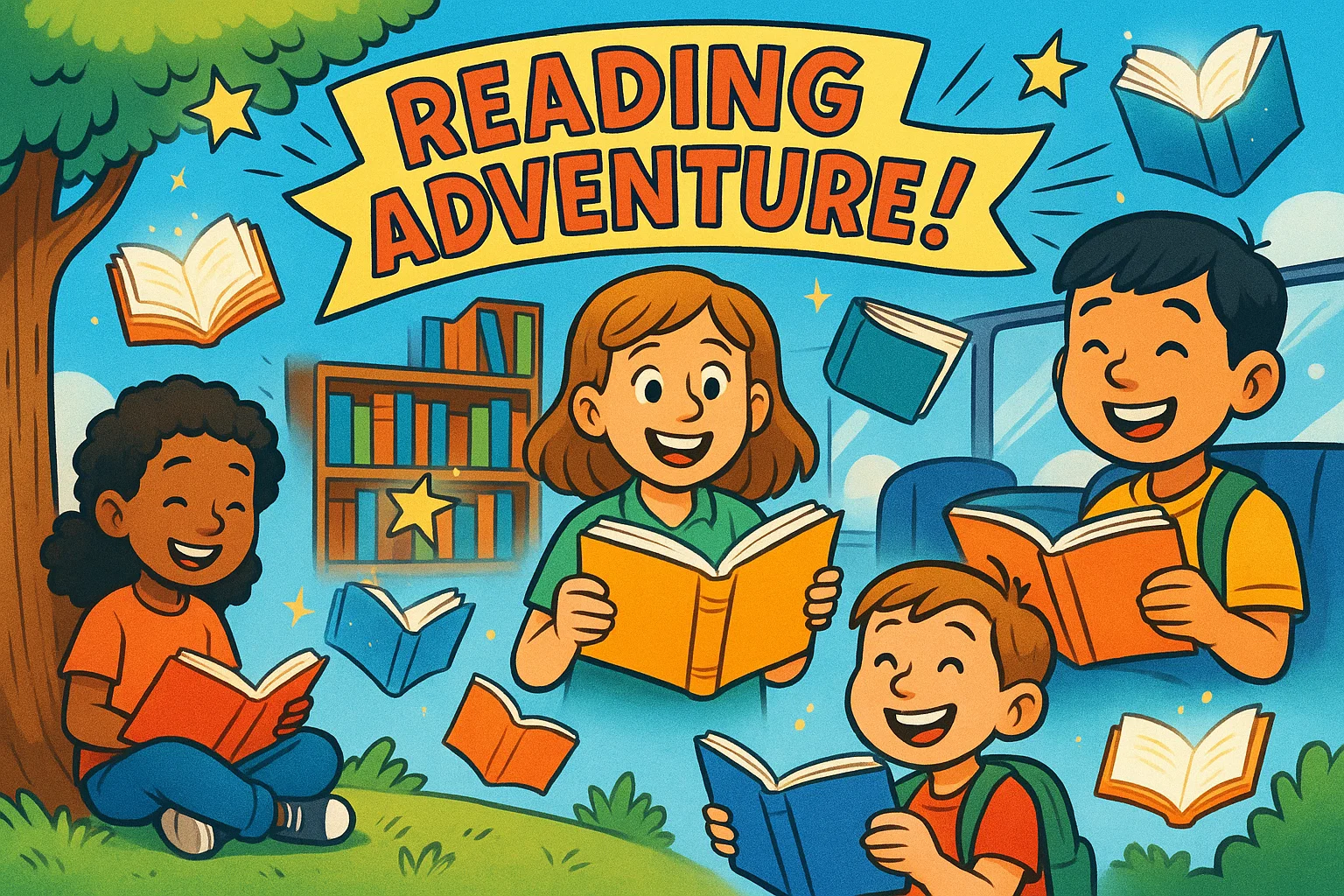
The ultimate goal of teaching reading comprehension is not just to pass a test, but to cultivate adults who continue to engage with texts for pleasure, information, and personal growth.
Diverse Genres and Media
A lifelong reader is someone who recognizes that reading material is everywhere and for every interest.
- Beyond the Textbook: Encourage your child to explore graphic novels, biographies, science magazines, good reading websites, recipes, coding manuals, and even the liner notes of their favorite albums.
- Digital Text Exploration: Discuss how to critically process information online, including evaluating sources and spotting bias—a crucial 21st-century reading skill.
Book Clubs and Reading Challenges
Group activities make textual engagement social and accountable.
- Student-Led Book Clubs: Students need to choose the book, set the pace for access, and lead the discussion (with initial teacher scaffolding). This fosters autonomy and peer investment.
- Family Literacy Challenges: Set a goal to study a certain number of books or pages over the summer and celebrate the milestone together.
Linking Reading to Real Life
Help students see the tangible, practical value of their strong reading abilities.
- Textual Access for Hobbies: If a student loves gaming, encourage them to process strategy guides or articles about game design.
- Current Events and Text: Use child-appropriate news sources to connect reading a text to current events and allow students to understand the world around them.
- Career Connections: Discuss how textual proficiency is essential for every career—from reviewing legal contracts to processing architectural blueprints or scientific papers.
Celebrating Reading Achievements
Acknowledge and reward effort and consistency to keep the motivation high.
- Reading Milestones: Celebrate when a student finishes a challenging book, hits an access goal, or shows significant improvement in their comprehension level.
- Meaningful Rewards: Rewards don’t have to be expensive. They could be a new, self-selected book, extra time in the library, or a class “literacy celebration” party. Focus on celebrating the journey and the effort.
Summary Table: Key Reading Strategies
| Core Component | Strategy Example | Benefit for Comprehension |
| Decoding & Phonics | Word Ladders, Multisensory Phonics | Builds automatic word recognition, freeing up cognitive load. |
| Fluency | Repeated Practice, Teacher Read-Alouds | Improves processing rate and expression, which enables focus on meaning. |
| Vocabulary | Contextual Clues, Word Walls | Increases word knowledge, reducing the frequency of comprehension roadblocks. |
| Comprehension | Visualizing, Questioning, Summarizing | Activates higher-order thinking skills and ensures deep understanding of the text. |
| Motivation | Choice-Based Engagement, Growth Mindset | Fosters a love for reading and encourages perseverance through challenges. |
In conclusion, improving reading skills is a comprehensive process that requires simultaneous attention to foundational reading skills (like decoding and fluency) and advanced comprehension strategies (like inference and synthesis). By consistently implementing these research-backed ways to help students both in the classroom and at home, we can ensure that every child is equipped to become a proficient scholar and a lifelong learner. The work may seem complex because many different skills are involved, but a structured, patient, and positive approach will yield transformative results, helping all students develop the literacy skills they need to succeed.
